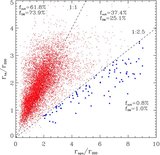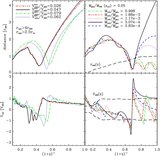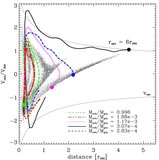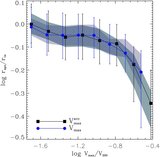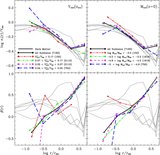Image Details
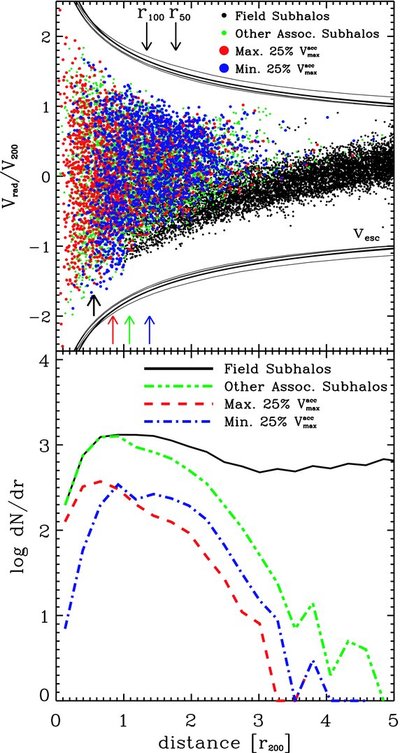
Caption: Figure 1.
Upper panel: radial velocity vs. distance to the main halo center for all subhalos within 5 × r 200 in our simulations. Velocities and distances are normalized to the virial velocity, V 200, and virial radius, r 200, of each host. All "associated" halos are shown in color, subhalos on first infall are shown in black. Different colors are used according to the peak circular velocity of the subhalo at the time of accretion. Blue denotes the quartile with smallest V acc max, red those with largest V acc max. Green denotes the rest of the associated subhalo population. Upward vertical arrows of matching color indicate the half-number radius for the various subhalo populations. A shorter black arrow marks the half-number radius for "associated" DM particles. We find that 65% of subhalos in the range r 200 < r < 2 r 200 are actually "associated" and have thus already been within the host virial radius in the past. Roughly one-third of subhalos between 2 r 200 < r < 3 r 200 are also physically "associated" with the main halo. The upper and lower bounding curves denote the escape velocity for each of the five simulated halos. Lower panel: Radial distribution of subhalos. The color key is the same as in the upper panel.
Copyright and Terms & Conditions
© 2009. The American Astronomical Society. All rights reserved.


